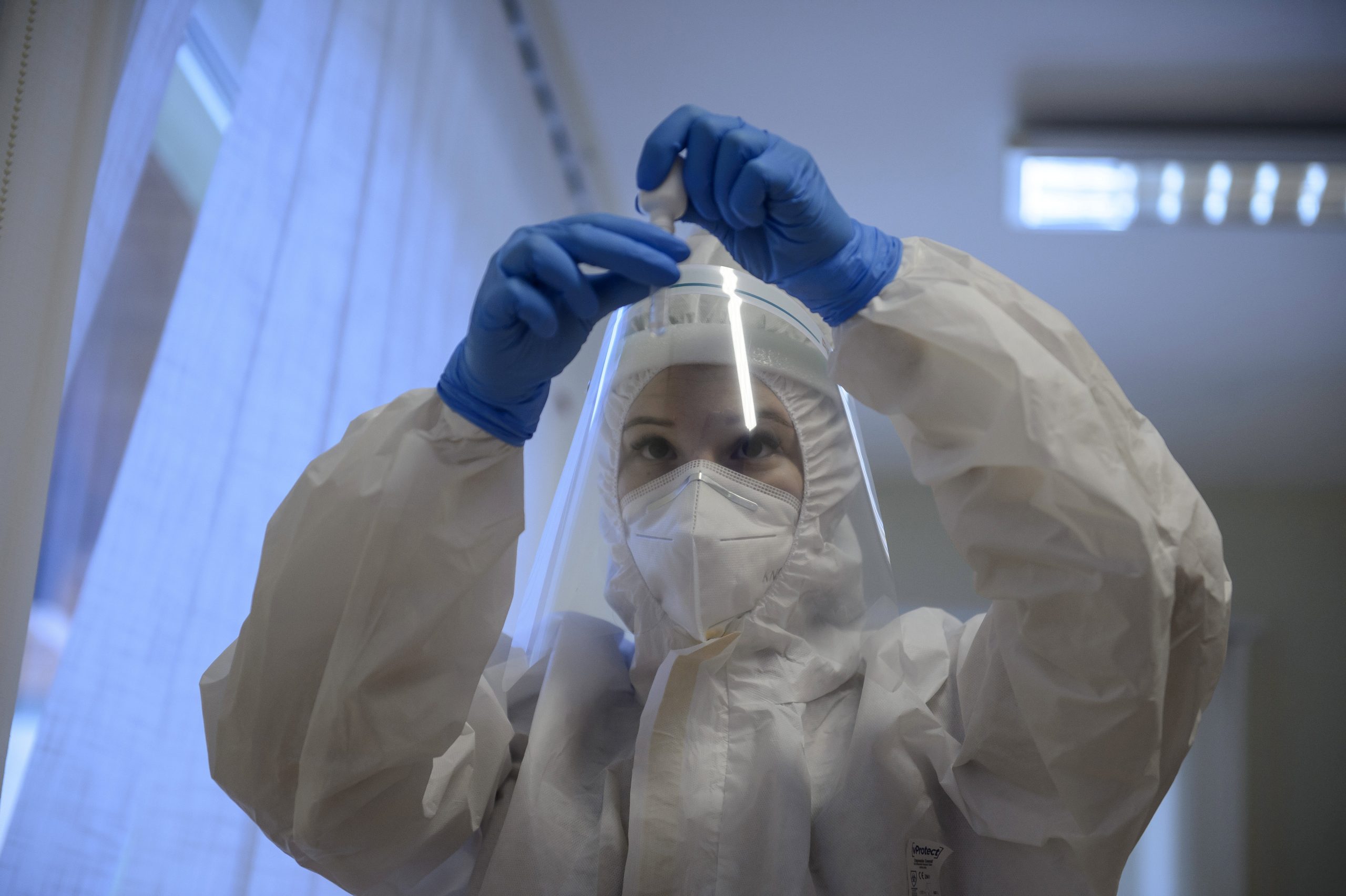
According to predictions, the new variant will already reach half the height of the previous delta wave by the end of the week, around Friday.Continue reading

Experts say that the fifth wave caused by the omicron variant has started in Hungary as well. So far, the hope is that the symptoms caused by the new variant are milder, but because it spreads faster than the previous ones, there is still cause for concern.
The data first showed that something had started on the day after Christmas, but in the days after Christmas it became clearer that the omicron epidemic had started in Budapest, Gábor Vattay, physicist and epidemiological modeler, said on ATV‘s program Egyenes beszéd.
The head of the Department of Physics of Complex Systems at ELTE added: “The absolute numbers may not have been obvious to the casual observer, but omicron has been spreading in Hungary for about the tenth day.”
Earlier, several experts said that a fifth wave of the epidemic could hit Budapest next week. Vattay now added that in rural areas, the fifth wave could start after a delay of a few weeks, as evidenced by the rise in the hereditary levels of the coronavirus in waste water.
According to Béla Merkely, Rector of Semmelweis University, there are likely to be tens of thousands of cases in Hungary, as the omicron variant exploits every niche in order to enter the body. The expert hopes that the number of cases may not rise above the level seen in the fourth wave. He said that at the moment, although the number of cases is rising, the number of hospitalizations is falling, will continue to do so for a week, and then will rise, but proportionally it will be lower than during the fourth wave.
Gábor Vattay also explained that while the omicron variant is milder than delta per person, it will reach many more people, with current estimates suggesting that up to 2.5-3 million people in Hungary could be infected, but only a fraction of this will be seen as actual cases. The epidemiological modeler expects that we will not even be able to measure the peak because there will not be as many tests. On the worst days this could mean 50-70,000 cases and up to 30,000 people could be hospitalized.
Merkely said that vaccinated people may have milder symptoms. They usually have a runny nose, headache, sore throat, and a fever that lasts for about two days, which are not as severe symptoms. Unvaccinated people, on the other hand, may develop more serious illnesses. He noted that it is important to get vaccinated as it “seals” the upper airways from the disease, so there is less chance of getting sick. Only vaccination can provide lasting protection against the virus,” said the rector of Semmelweis University. He stressed that the complete vaccination is three vaccines, one cannot settle for two.
“It is now clear that omicron is spreading much faster and more easily, with a speed that exceeds that of the hitherto dominant delta variant. At the same time, the severity of clinical symptoms is beginning to emerge. The good news is that the data so far suggests that many more people are likely to survive infection with a milder disease at home,” said Ferenc Jakab, Head of the National Virology Laboratory, summarizing the main lessons from international research so far. “While it is too early to say for sure, the good news is that omicron affects mainly cells in the upper airways, and less so in lung tissue. We hope that omicron will be less likely to cause pneumonia than previous waves of the epidemic caused by other variants,” he added.
While the milder symptoms are definitely good news, unfortunately, overall, the situation is still worrying.
By the law of large numbers, even if it causes milder symptoms, there will be susceptible infected people, and overall there will be more severe infections, more patients in intensive care, and possibly more deaths. We can’t be sure of that yet either, but the impact on the health system is unlikely to diminish,”
Jakab said.
This seems to be the case in other countries too. “When you have such a high volume of new infections, it might override a real diminution in severity,” American infectious disease expert Dr. Anthony S. Fauci told The New York Times.
Also speaking at the press conference, WHO Director-General, Tedros Adhanom Gebrejus, said that omicron is not yet “mild,” as the number of people infected is at record levels worldwide, and healthcare systems are now overwhelmed.
According to experts interviewed by leftist daily Népszava, the risk of infection is also high in children, as barely a quarter of the 5-18 age group have received two vaccinations and 30 percent have received one. According to the article, this means that entire classes and grades could fall ill overnight.
Zsófia Mészner, a pediatric infectious disease specialist, said: “If you have had an infection, it is unlikely that you will get sick again from the same type of coronavirus in a few weeks.
However, once one variant succeeds another, the new mutations are no longer really protected against by the immunity gained from a previous infection with a different type of coronavirus.
Featured image via Zoltán Balogh/MTI